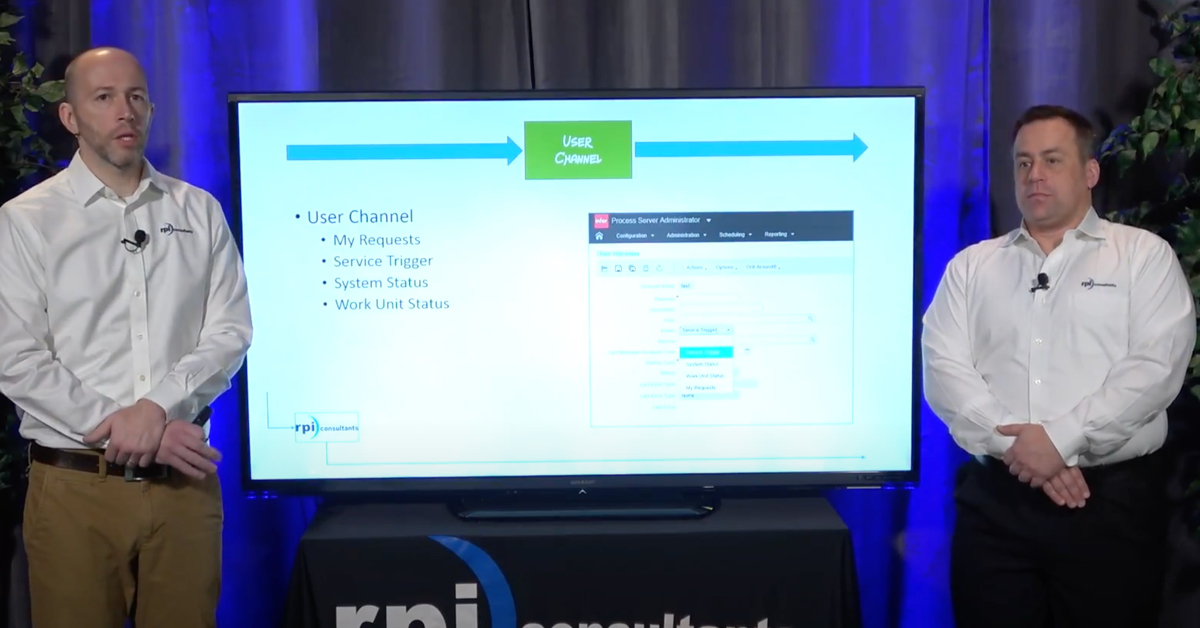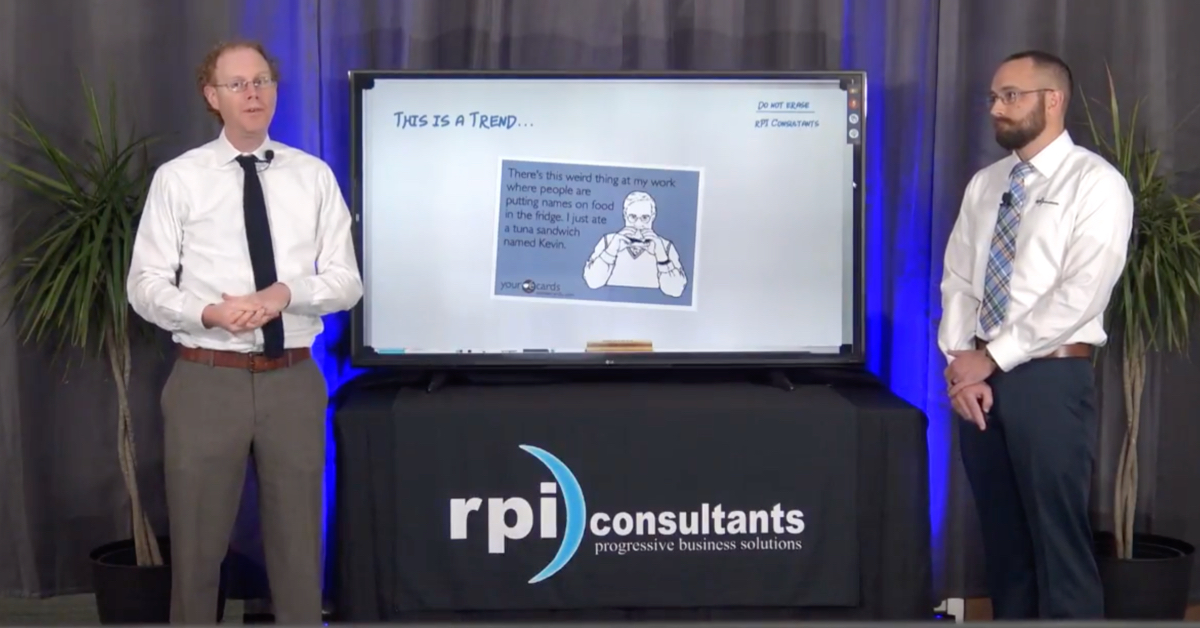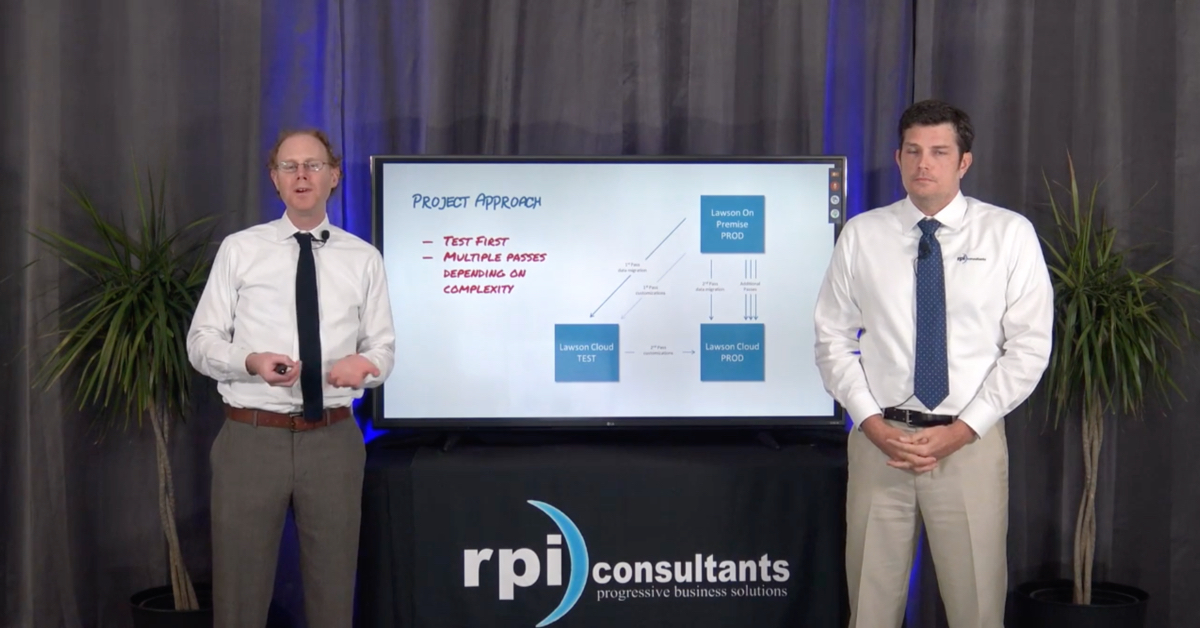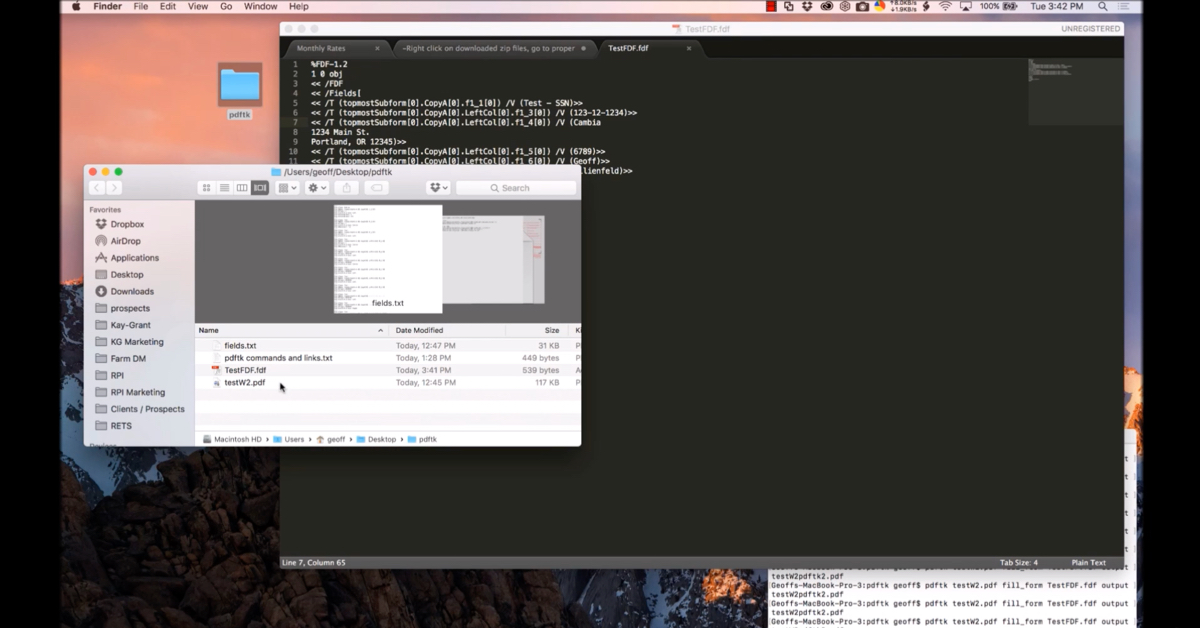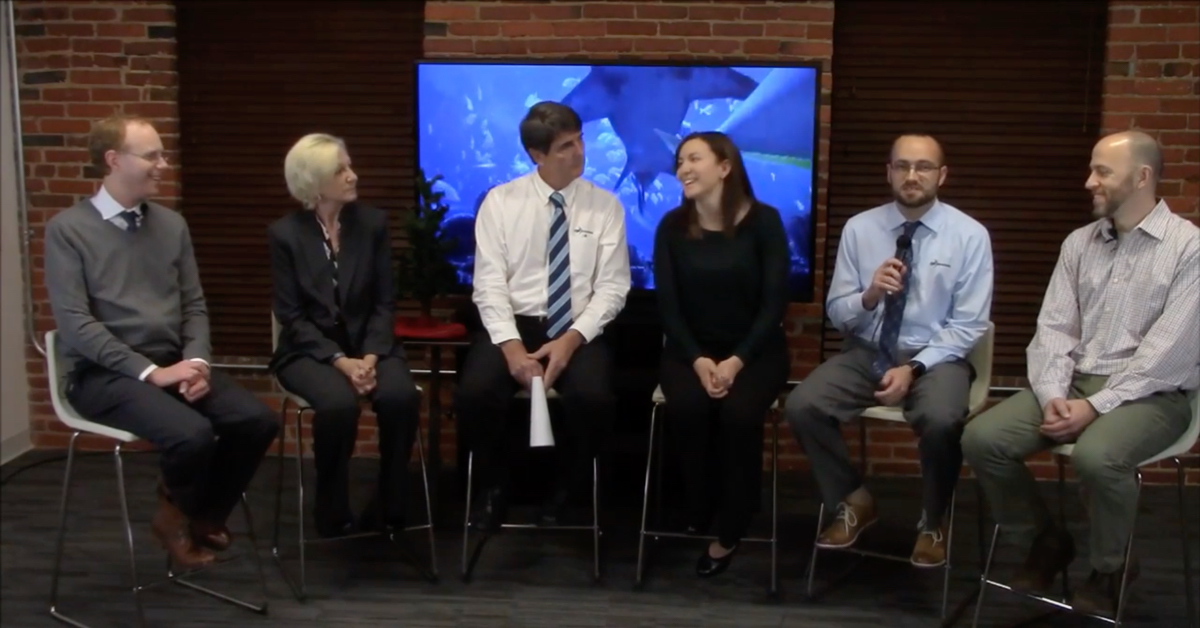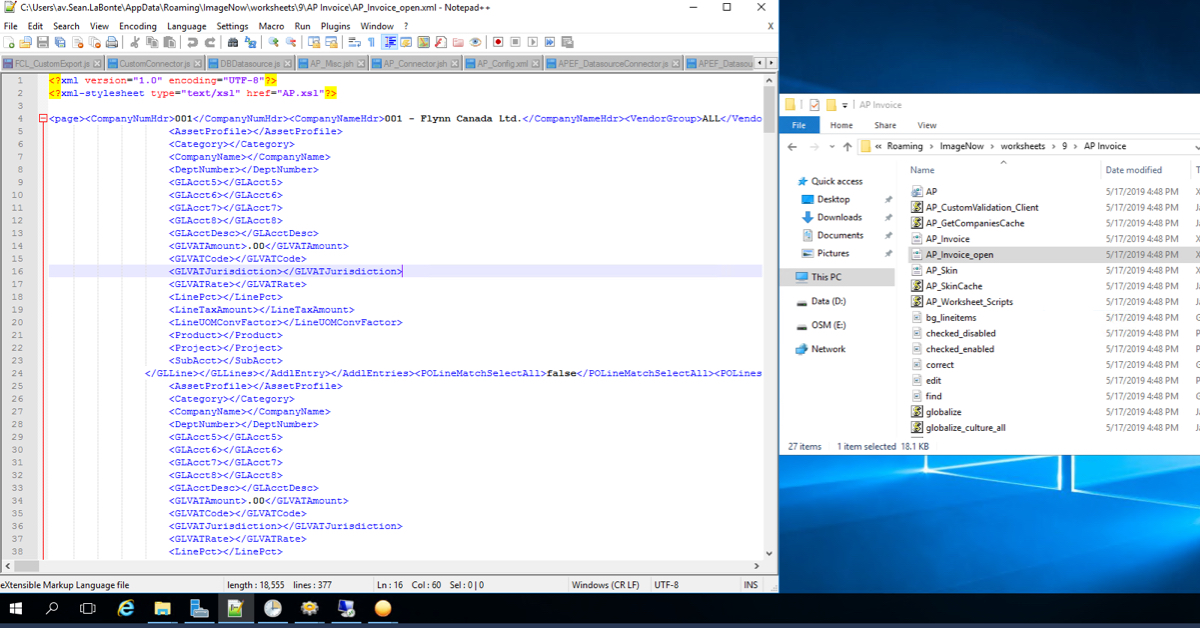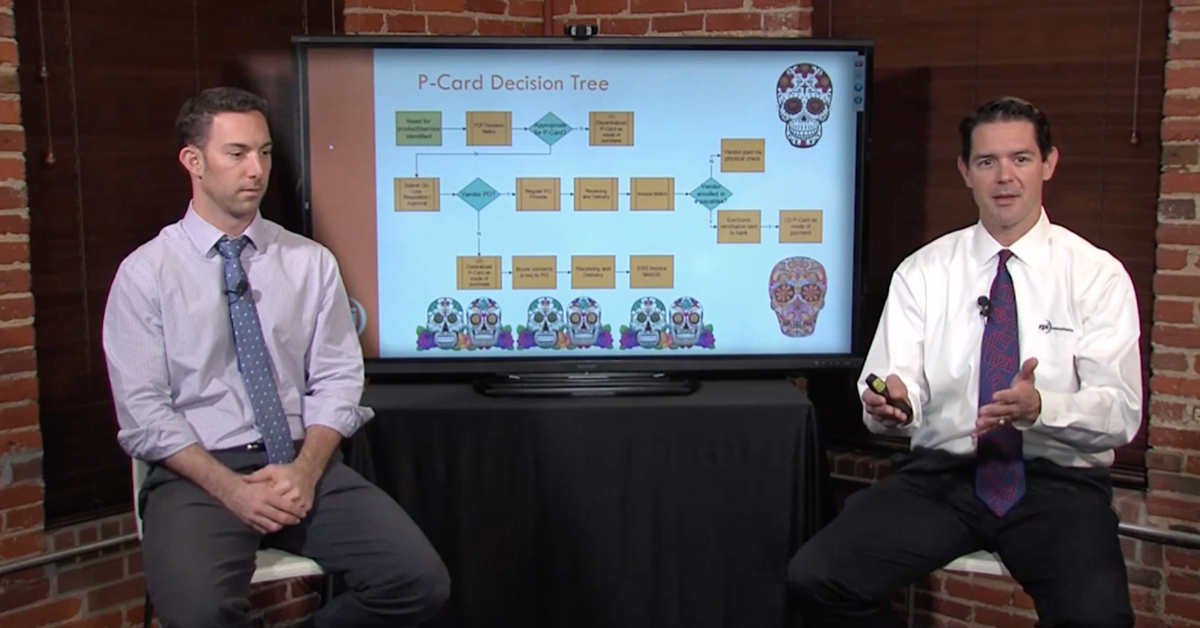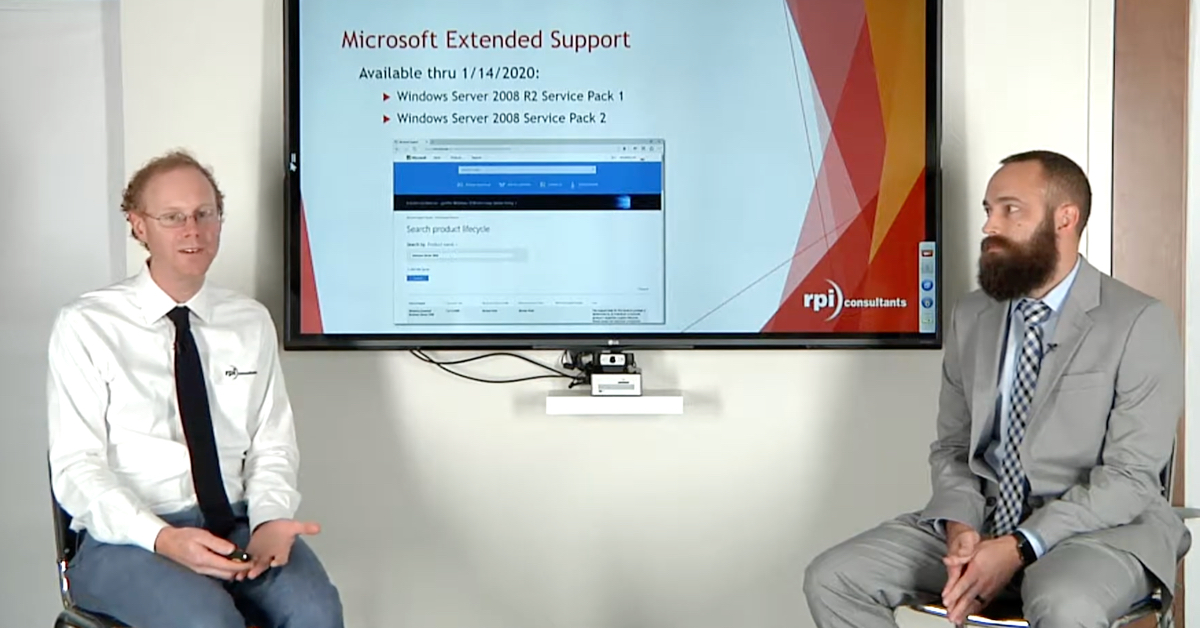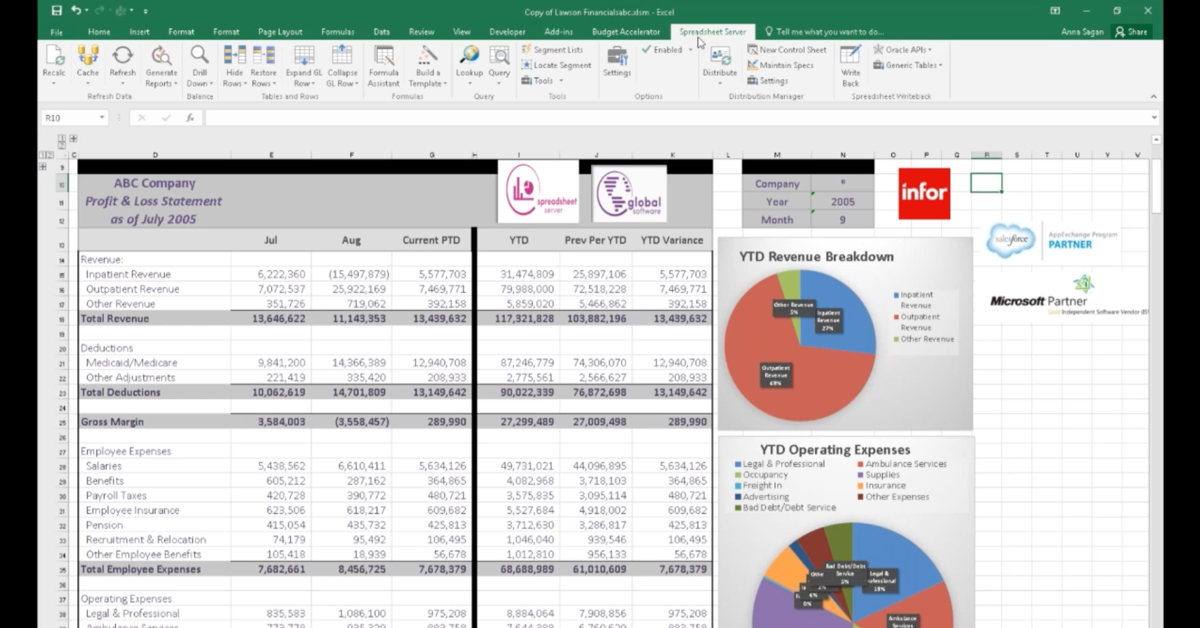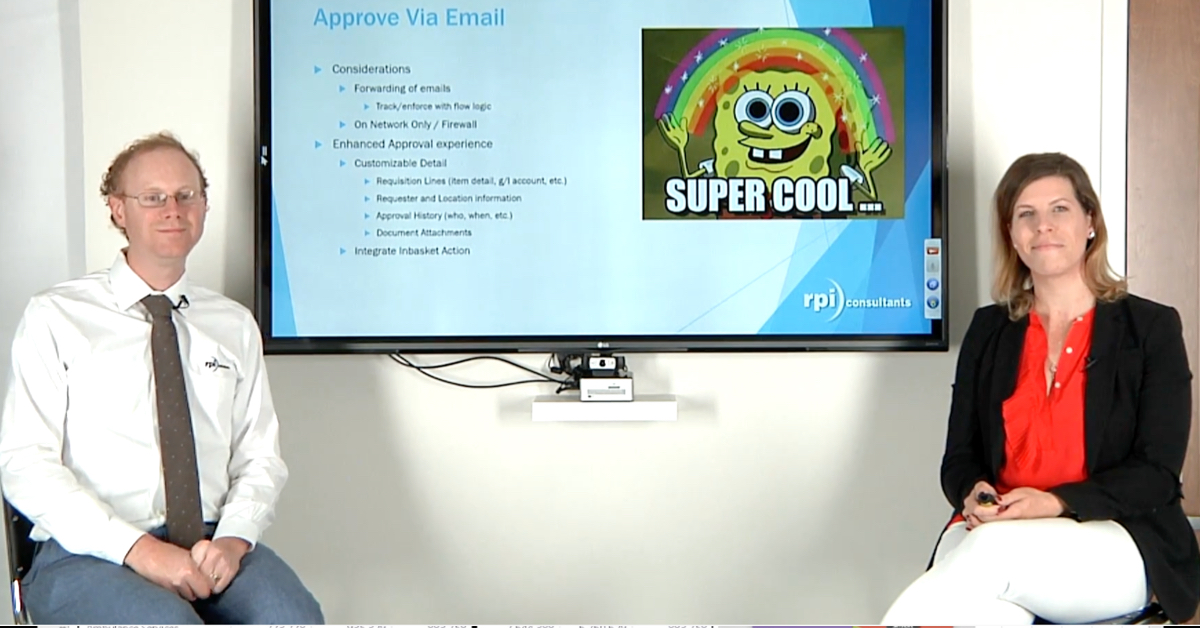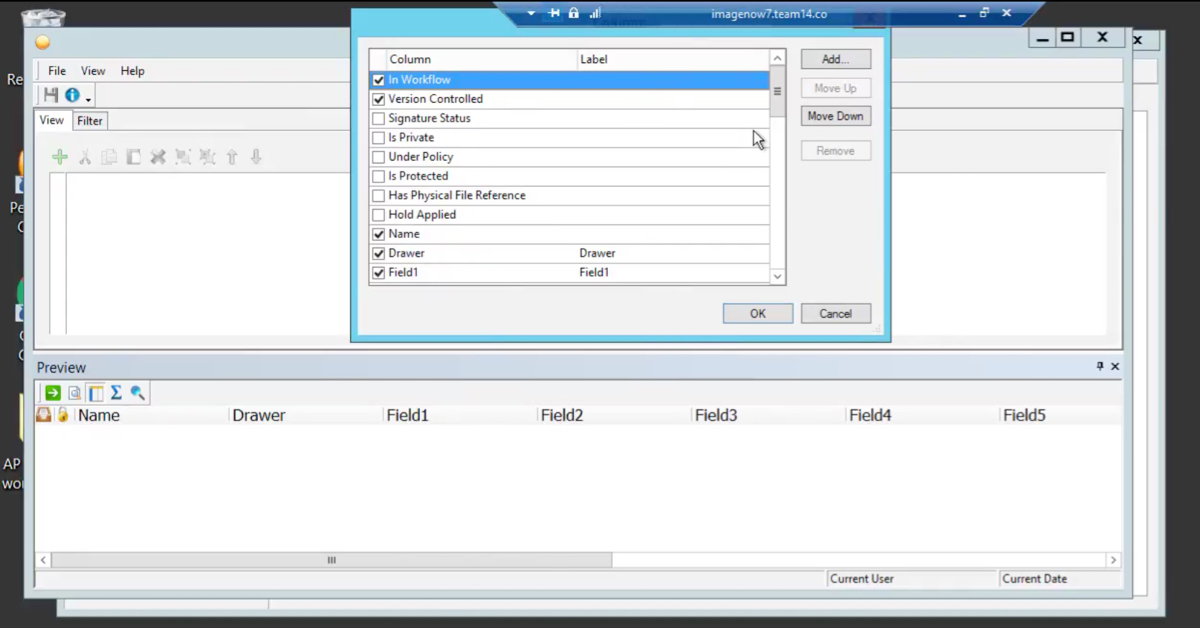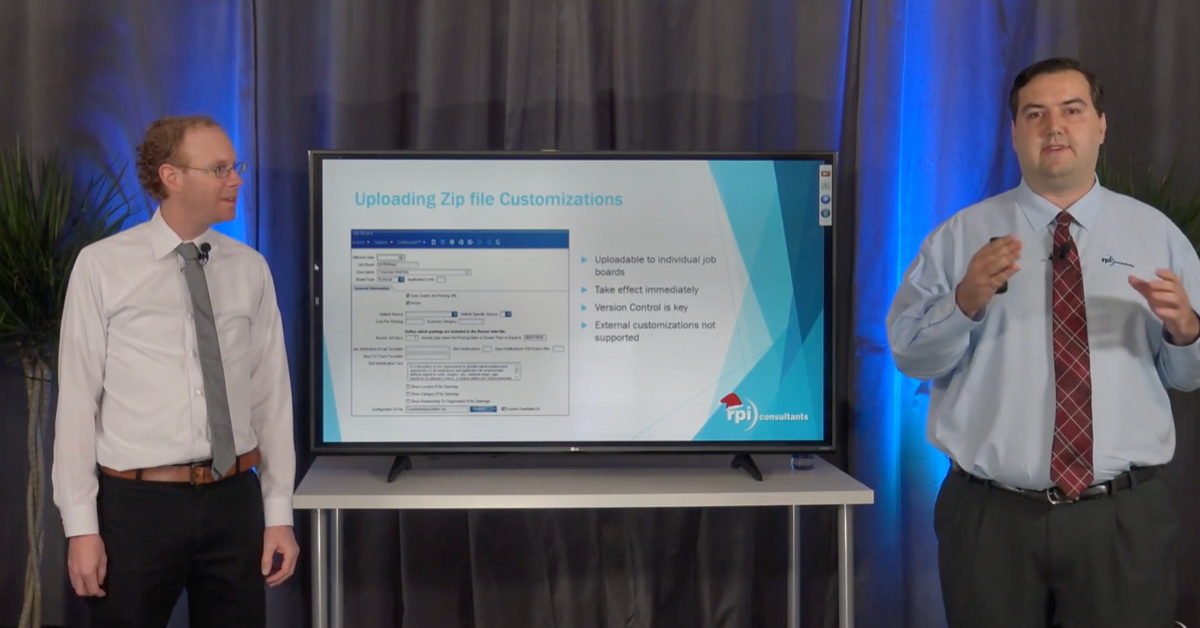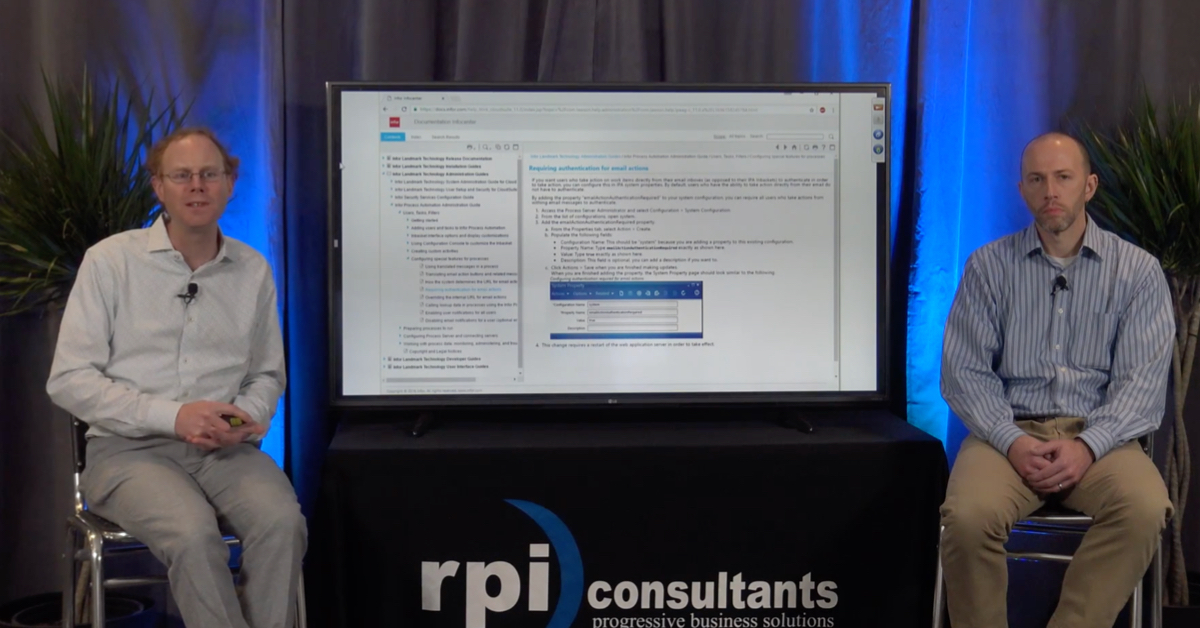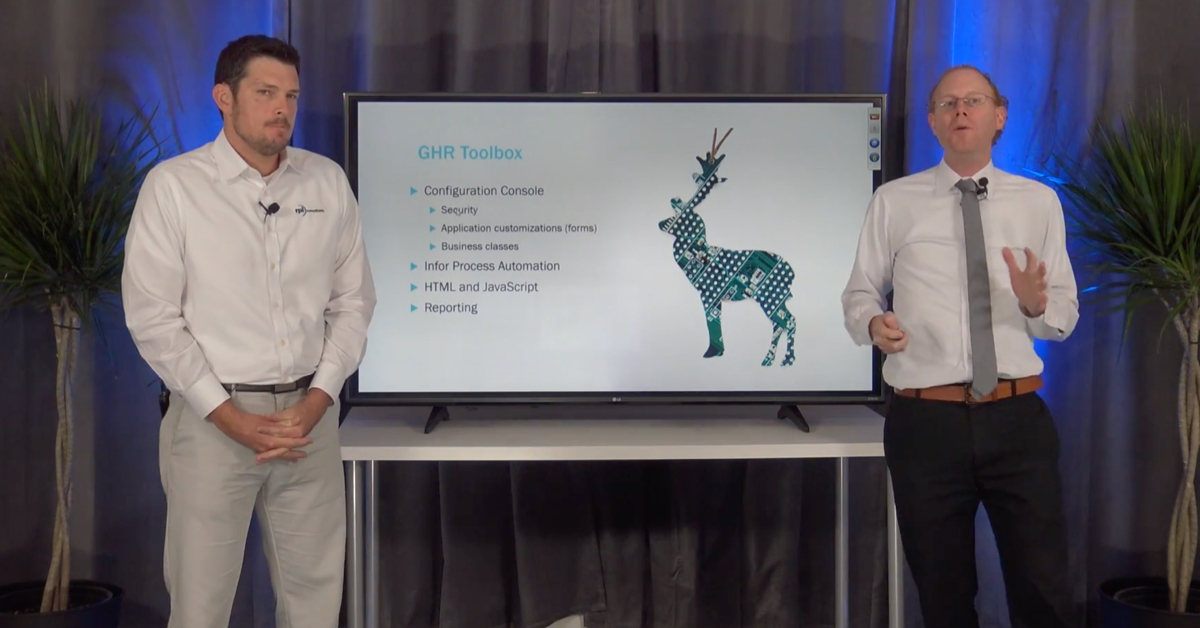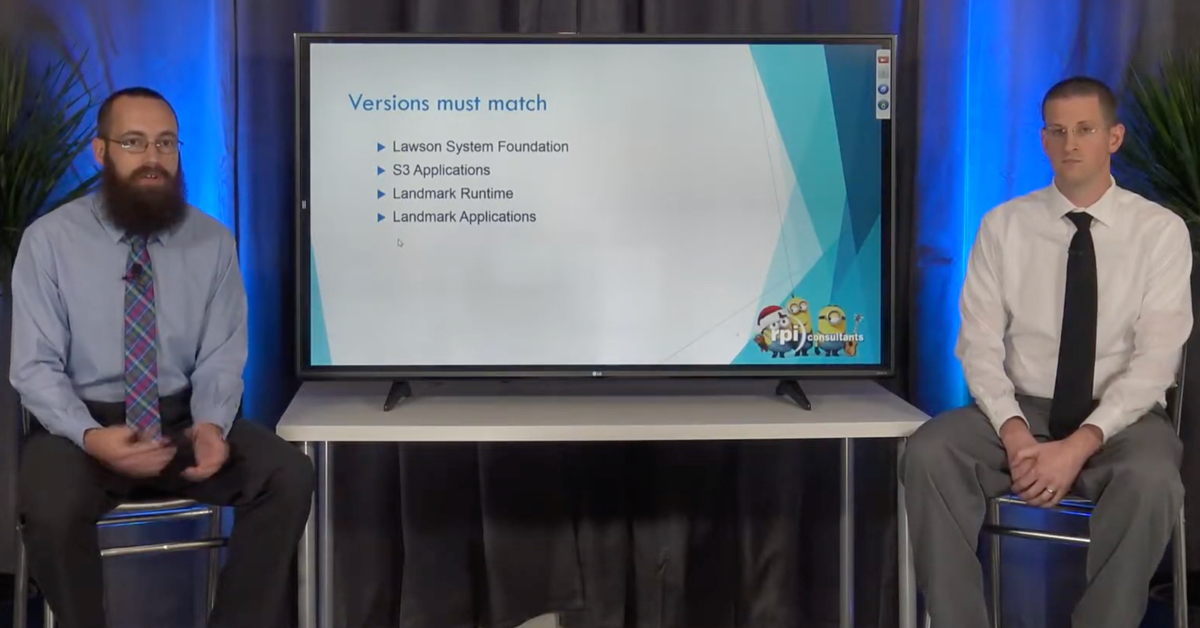Brainware for Transcripts
Manually processing and transcribing student transcripts is time consuming and error-prone, creating delays and issues for student records requests. Brainware by Hyland is a powerful intelligent data capture and advanced OCR product that now includes a pre-packaged solution specifically for transcripts that automatically extracts important student and course data.
Transcript
Pitts:
Welcome to Webinar Wednesdays and thank you for joining our Brainwave for Transcripts webinar today. My name is Pitts. Today we’ll be talking about Brainware Intelligent Capture and what that looks like for a transcript solution.
A few housekeeping items, this webinar will be recorded and posted online to our website. The slide deck will be sent out to everyone who’s joined today and that will also be available online on the website as well.
There’s a moderator standing by to take your questions as we go through this webinar. So feel free to add them into the GoToWebinar interface and he’ll interrupt us and when it’s appropriate or we’ll just wait to the very end to have a Q&A; session together.
As I mentioned, this is part of Webinar Wednesdays here at RPI. We do this the first Wednesday of every month this is the last webinar for today. Next month in September we have a webinar around 7.2.3, so that’s the latest image now release. We’ll be going over some of the new features, talking through the learn read updates.
That’s one of the big significant things with this release. That’s at 11:00 on the 5th and then also on the 5th we’ll be doing an overview with Yoga Link, which is kind of our new Chrome extension that’s going to allow you to link documents straight out of the Chrome browser, so integrating with your app plans out of Google Chrome. Again, that’s at 1:00 as well. So next month.
As I said, my name is Pitts. I’m a senior solutions architect here at RPI, been working around this Perceptive Content platform for about six years now. So, a lot of ImageNow Brainware Hyland products. I have a lot of experience within the healthcare higher ed and then the AP solutions as well, and I love my dog Tofu.
Jim Fall:
Good afternoon, my name is Jim Fall and I’m a higher ed specialist here at RPI Consultants and have been working with a lot of colleges and universities throughout the US and Canada, and look forward to talking to you more about it.
Today’s agenda, and we’re going to talk about several different topics. One and we’ll give you a quick overview of RPI Consultants, set the stage with transcript processing where it is today with most colleges and universities. Then Pitts will do a deep dive down into the Brainware for Transcripts technology. Then we’ll hop into a detailed Brainware where demonstration.
Then summarize things with a client case study and a summary of features benefits and questions and answers.
Pitts:
Perfect. So a little bit about RPI Consultants. We’re a professional services organization with almost 20 years of experience now. Kind of working with ERPs ECMs. We’re made up of about 80 full-time consultants based out of Baltimore, Tampa and here we’re in Kansas City Missouri, we offer technical, strategy and architecture services.
So everything from your upgrades – installation, solution health checks, and even iScript developments. We can do all of that around the ECM platforms and more. So, we do a lot of that around perceptive content OnBase, Brainware, Kofax and of course the Infor products as well.
Jim Fall:
A little bit more about RPI Consultants. Our business is built around some key technology partnerships on the ERP side, Oracle, PeopleSoft, and Infor and with the ECM platforms. Hyland is a key partner for us and the developers of the Brainware for Transcripts products, which we’ll be talking about in more detail.
Give you a little bit of an overview of RPI Consultants and our experience in higher education. We’ve been in every department, every size of college and university throughout the US and Canada, 50-plus colleges and universities.
Whether you’re a small college with 1,600 students or a large Big 10 or PAC 12 university, we have solutions built for you. Today we’re going to dive down into the transcript processing solutions and with Brainware for Transcript product.
A little bit about transcript processing. Today in most colleges and universities it’s a manual process with time consuming data entry, a lot of multi-handling of transcripts from one department to the next. But it’s a critical step in the admissions process and how quickly you can process transcripts can determine how soon that you can bring the student that you want into your university.
Today, less than 40% of colleges and universities have some form of automated electronic transcript processing solution in place today. So, most people are just manually doing data entry, manually moving transcripts around that get handled multiple times across multiple departments and slows down the process of admitting the students that you want admitted.
Transcripts today, one of the challenges is that they come in a lot of different forms, whether it’s college transcript high school military each organization each university each high school has similar but very different transcript. It’s key to be able to have a solution that can handle any form of transcript in any shape and size.
Pitts:
Yep, and that brings us right into Brainware for Transcripts. So, Brainware for Transcripts is kind of Hyland’s approach to solving all of this manual processing that happens within the admissions department. It’s going to allow you to automate that manual transcript processing by leveraging the OCR technology and intelligently reading and extracting that data off of the transcripts for you.
So data such as course information, credits, grades, even where we’re going to … Brainware for Transcripts allows you to do is to kind of plug into any ECM, it’s ECM agnostic. You can use it as a standalone solution or fully integrated to the SIS or whatever ECM you guys are using at the moment.
Brainwave for transcripts is kind of built on the Brainware platform within a typical Brainware solution. Here on the left, we capture all those transcripts in automatically and then they go into an OCR stage. Within the OCR stage, this is where we get all of the metadata off of the documents itself and then we move it into a classification stage.
Within classification this is where we assign document types. The document types are assigned so that downstream they can follow their own set of rules. The document types were assigned based on that OCR data.
After classification we move into an extraction phase where we do pull that metadata that we get from the OCR step and those into specific keyword sets or whatever indexing metadata that we’re looking for. So this is where we extract all of the line information, all of the courses and the credits that might be a part of the transcript.
After the extraction we go into a validation step. This is kind of the final check. It allows us to validate all the data, whether that’s against SIS or just validating formatting of the data. So, Social Security numbers, date of births, just making sure that those values are exactly what we’re looking for before we move it into a workflow step or a visibility step at the end.
So the idea is it’s based on the Brainware, the typical Brainware solutions but then the transcript solution kind of drops in a pre-configured transcript solution all together within Brainware. So, we have prepackaged transcript templates and whatnot all inside of Brainware already. So it’s kind of it gets you a 90% of the way there and then that last 10% is just customizing it for the needs of the customer.
So as I mentioned kind of the first step after OCR is classification. Jim mentioned there’s all sorts of different transcripts out there. This Brainware for Transcript solution has a lot of that preloaded in there for us. So it kind of drops things into three main buckets here college transcripts, high school transcripts and military transcripts.
For each one there’ll be different sets of rules, so that is very context based so based on that OCR data and it is document agnostic. So the idea is that none of this is template base. We should be able to bring those in. Brainware will drop them into these three buckets for us based on the information on that transcript.
And, of course, if we need to add additional buckets we can do that as well. So something like an international transcript that might not fit those three categories, we can build a fourth one out there and then configure that to what you’re looking for specifically. So kind of after classification we go into the extraction phase.
So this extraction is where we’re going to pull that metadata and store that into index keys or custom properties or whatnot that we’ll need to push that into the ECM. So this is based on the classification so. Specific transcripts are different transcripts will need different information pulled from them. So it’s all contextual based on the document type itself. Again, no templates are really needed. We’re not using anchors, we’re not using zones.
It’s all based on that OCR data. Again, the Brainware for Transcripts pre-loaded solution comes with a lot of these sample subs for you. So you should take you a majority of the way there and everything else is really just customizing it for your needs.
After we do our extraction, we move into a validation set. This allows you to kind of reconcile all the data. What this what this is doing is doing lookups to the SIS or the ERP just to validate that data and I mentioned before, we’re validating a lot of the formatting of that data that comes out just as a double check before we input this into a workflow or input this into your SIS directly.
It’s going to do items such as Social Security numbers, date of birth, address. We can set up these rules as we need to. Then it even allows you to kind of normalize any abbreviations or misspellings as well as a part of the OCR process.
Now, if Transcripts, there’s always the exception case. So, sometimes we have transcripts that can’t be classified, so we have those three buckets. If something comes in that doesn’t that falls below a specific confidence interval that we set, we can push that into a verification step.
So, this happens during the classification step and even during the extraction step. So, if we can’t classify the doc type or if we can’t pull a specific piece of metadata that we’re normally pulling, we can send that into a verifier.
This is the same Brainware verifier that’s a part of all the other Brainware solutions but this is a GUI that allows a user to kind of validate that metadata. The image is shown, the best guess is shown as well as what Brainware thinks it’s going to be and then the user is the one who can tell us what is correct and then we push that forward.
Once that leaves verify or if it doesn’t even have to go to verifier and it goes all the way through, this leaves Brainware and this is where kind of the ECM takes over. This is more of the workflow component that the ECM will provide. So with OnBase what you’re allowed to do is once that transcript gets processed out of Brainware it comes into OnBase where we have all of the metadata that we pulled out and it’s already presented within the keyword sets.
You’re now able to kind of modify that data as we need to, add additional pieces of metadata, edit your course rows, accommodate all the other edits that might be a part of this transcribe, pull information that’s not on the transcript onto the indexing forms and the same idea within the perceptive workflow as well.
Now, after everything’s kind of been processed within the workflow the very last step is typically the SIS integration. So this is sending all that metadata that we extracted from the transcript or a metadata that we’ve added on to the transcript into your SIS. So here you’re leveraging the ECM technology for the integration.
Now this might be something more complicated like a connector or an API integration where we’re doing web service calls to the SIS or something as simple as a file dump. It really just depends on what the SIS is capable of doing. But ECM should be able to handle a lot of those integrations.
Jim Fall:
Okay. So is everybody ready for the demo? We’re about ready to hop into a detailed demonstration on Brainware for Transcripts and give you an overview of the processing of high school, college, military transcripts. Go through the process of capturing transcripts, whether they’re scanned or sent via email or other third-party applications that send transcripts.
Then go to the step of extracting the data inside Brainware verifying the data and then pushing it out to OnBase for the workflow for the review process, and of course, equivalency.
Pitts:
Perfect.
Jason Elsenraat:
Hello, my name is Jason Elsenraat and I am the team lead of solution engineering for Hyland and I’m going to walk you through a demonstration of Brainware for Transcripts today. Just so you know, I’m going to utilize this with Hyland OnBase enterprise content management system. But really Brainware for transcripts could be used with any other document management or enterprise content management system out there.
So with that I’m going to go ahead and get started. The first thing that I’m going to do is capture some transcripts into the system so we can send them to Brainware for Transcripts for additional processing. So I’m going to go ahead and open up the OnBase Unity Client. From here I’m going to go to Batch Scanning so I can capture documents or transcripts into the system.
So, there are a couple of things really with capturing that we should probably discuss and one would be the scanning of transcripts into the system. You can certainly scan these transcripts into Brainware into your ECM system. But the important thing to note is that you would need to send them through an image cleanup service, and most likely we could help you with setting up the image cleanup service.
That’s important so we can remove the background images and watermarks that come on the back or on those paper transcripts. So it’s important to get those transcripts on a nice and white clean background so we can get good OCR results. We’re going to talk about OCR in more detail here in a few minutes.
Also, if you’re receiving transcripts from a third-party transcript service, typically those are received as a PDF. We would be able to capture in those PDFs and run those through the Brainware for Transcripts so we can extract the data off of those transcripts as well.
So I’m going to go ahead and just sweep some transcripts into the system or import them in. I’m going to import them from a particular directory. There we go. So I’m going to go ahead and import those. And whenever I could do images only, I could do other files, again, like a PDF as well if I wanted to. I’m going to go ahead and just sweep those in.
So you can see over here that the documents are now coming into OnBase. And at this point in time I would have the ability to QA or review these documents to make sure that they were scanned in correctly. You can see my first transcript is a military transcript, it’s a six pages. Go to the next one.
We have a college transcript and we had what I brought in was really two college transcripts, two high school transcripts, and also a military transcript. So I wanted to do a good combination of all the different types of transcripts that you could potentially be running through Brainware.
Now whenever I click the Go to Batch icon, it’s actually going to take these transcripts and send them to Brainware for additional processing. So, let’s go ahead and jump over to Brainware now and look at this process that’s going to happen.
What I’m about to open up here is not something that people end-users would ever go into and review you or look at usually. This is a service that is going to run on a server either in your data center or in our data center. This is really where Brainware is doing the work.
So we have our set up in a way to where we have the different steps of the process within Brainware are separated out into different functions. Really the ones that we’re going to focus on today here are one, two and three. The first that it’s going to do, Brainware. This is Brainware here. This is called the runtime server.
The first thing that it’s going to do is import the transcripts into Brainware. So this is step one. If I click on Statistics, you can see now it’s already imported five transcripts in Brainware. So the next step is going to be the OCR classification and extraction step. This is probably the most important step and I’m going to walk through this in a little bit more detail.
So, if I click on Statistics, you can see that it has OCR classified and extracted all the data on these transcripts already. So, let’s talk about these steps in a little bit more detail. Everyone says that they want to OCR their transcripts or their documents.
That’s certainly a very important step in this process. The way that you get good OCR results is by getting a good clean scanned image. Again, removing those background images and those watermarks, and that very important to get good OCR results.
What OCR stands for is Optical Character Recognition. What that means is it’s going to take all of the text on that image, whether that’s a scanned image like a TIF document or a PDF and it’s going to put it in a format that a computer can read it. A computer readable format to where we can interact with the letters and words on that actual document.
So once it’s been OCRed we’re going to classify that document. So what that means is it’s going to look at the words on the document and it’s going to determine if it’s a high school, a military or a college transcript on its own. So what that means is you can take all of your different types of transcripts and put them in the same batch of documents and scan them all and together. You don’t have to separate out those transcripts into separate piles.
So, the only thing that you would need to do would be put a separator sheet in between the transcripts so Brainware knows where one transcript ends and the next transcript starts so it’ll automatically classify those transcripts. Then based off of that classification, we’re going to extract the appropriate data off of that transcript.
We’ll extract different data, of course, from a college transcript than we would a high school transcript. Potentially on a high school transcript we might want to get information like class rank or some other type of information where on a college transcript we maybe want to extract a degree that was earned on that transcript.
So, once — and the most important thing with Brainware for Transcripts in my opinion is the extraction step — because we do not have to create any templates at all and we don’t have to tell Brainware where the data is located on the transcript.
So what that means is if you get a transcript from a brand new institution that you’ve never received a transcript from you can run it through Brainware and it should be able to extract all that data without you telling it where the data’s at. So, there are going to be times where you need to go into Brainware and go through a step called verification.
What verification is, is it’s saying it wants a person to go in and say yes this is the correct data or no this is not the correct data. So let’s go ahead and jump into the verifier and see what that process look looks like. So this I’m going to open up our desktop verifier but we also have a web verifier that you could go in and do the same step in any major web browser as well.
So I’ll just go ahead and open up the first one into the verifier and this is a college transcript. So you can see the classification here, this is college. Then anything that’s in yellow is what needs verification.
So you can see on this particular transcript what needs verification is the applicant. So, this would be a very quick step in most cases but I am going to take my time and walk through this so we can all kind of get a good understanding of how Brainware works and what’s going on in this process.
So first of all you can see that we have the institution up here. This does not need verification. It found American River College, 4700 College Oak Drive, Sacramento, California. Then you can see over here on the transcript we have American River College, 4700 College Oak Drive, Sacramento, California.
So what Brainware does is it looks at the top and the bottom of the every page on the transcript and tries to identify any information that looks like it’s the institution. Then it’ll take that data and it will do a lookup into your institution list, whether that’s in your SIS or it’s exported out.
It doesn’t matter where it’s being stored necessarily. We’re going to do a lookup into your institution file and if we are able to find the correct institution, then we’re going to populate it right here into the institution section. That’s where the institution ID came from.
This is your institution ID and this is all data coming out of your SIS or out of your institution file. So from this point on we’re not going to use the extracted data off of the transcript for the institution, we’re going to use information out of your system of record.
We’re going to do the exact same thing with the applicant. So in this case we have a name on here, we also have a Social Security number, a date of birth, but unfortunately it did not find the correct applicant so what you would need to do in this case is click on the applicant search button.
Then this is going to give you a search into your applicant list, whether that’s in your SIS or a CRM or some other system. You can see here that Mark Newland was the first place candidate and then Cristina Spears was the second place candidate. It appears that this is the correct Christina Spears.
The date of births matchup between the two but at this point in time I could also click on item details and that would show me more information from your system of record about this applicant as well. You can show as much or as little information here as you need to. But this would now help you identify who this transcript belongs to.
So it does appear to be the correct Christina Spears. So in this case I could just double click or click OK right here. Also if I didn’t have an applicant show up right here I could do a search and try to find that particular applicant in your system.
Or we’ll talk about if the potentially the transcript came in before someone applied and before they’re even in your system what that process would look like also. But this is the correct applicant so I’ll just double click Christina Spears. Now you can see it populates her information into the applicant section of the Brainware form.
I’m going to go ahead and click Enter, which means this is the correct information that’s basically telling Brainware yes this is correct. That’s all that needed verification on this form and it’s ready to go to the next step of the process which is most likely going to be a workflow step where somebody can review this data or maybe do additional processing like course equivalency lookups or so on.
But before we release this I want to talk about this in a little bit more detail. Like I said, we’re just going to take our time and walk through this one, especially the first one. If we did not find that applicant after we did a look up into your applicant list or your system, then maybe we received this transcript before someone applied.
We would be able to set an exception or an invalid reason. That’s what this drop-down list is up here. You can have different invalid reasons if you want to but in that case that we were just discussing I could say applicant not found.
Where in that case this could be sent into an exceptions queue where we could also put some additional processing on that queue to where maybe every night we can do a lookup into the applicant list and see if we find a potential match.
Then if we do then we could populate that information, like this student ID into the correct location and then route it on for somebody to review. Or if the institution wasn’t found, institution and applicant both weren’t found, you could also have other invalid reasons here. One fairly common one that I hear about is duplicate institution.
If I did a lookup and maybe this was yellow and it needed verification I could do a lookup. It’s possible I would have had to American River Colleges with the exact same address. You notice or your workers notice that this is a duplicate institution, I could flag that as duplicate institution here in my exception handling and that could get routed to a specific queue where someone could go through the process of cleaning up the institution file, for example.
Okay. So what the data that — so, again, this is all information out of your system of record as well as the applicant data. What was extracted and is going to be used off of this transcript of course is the date issued. If I click on this field right here you can see that it puts in red a red box around the area that was actually extracted.
Also you can see the OCR results of anything that I roll over on this transcript. So, this is what — this is not necessarily what was extracted, this is just what was OCRed by the OCR engine. So this is the red box. This of the area that it used for the date issued. You can see that this date is a June 03, 2011. But over here it’s in a month date/day/year format.
So we do have the capability of putting this and doing date normalization into any date format that you need as well. Extracted the cumulative GPA, and again, I’m looking for the red box. Once I click on this I look to at the image and I look for the red box.
You can see the red box right here. This is the data that was extracted off of this transcript, which is impressive because the cumulative GPA you can see here we have a term GPA, a cumulative GPA, term cumulative, term cumulative. So in order for Brainware to find the correct cumulative GPA is fairly impressive in this case.
Also, if some times and if you have trouble reading the information over here on the transcript you can always look down here on the magnification bar and it’s going to magnify and put right in the middle exactly data that was extracted for that particular field. So in this case I can kind of read that but whenever I click on a grade here, I have trouble reading some of these grades. So a lot of times I focus my attention down here on the magnification bar.
Then that brings us down to the coursework. All of the coursework, of course, was extracted here as well, including the term, the course number, description, the grade earned and grade points. Okay. If there was a degree that was on this transcript it would have extracted that information as well.
So, again, the only thing that needed verification on this particular transcript was the applicant. So I’m just going to go ahead and now release this one from the verification step and push it out to a workflow step where we can do additional processing on this transcript potentially. Or maybe we just want to take all of this extracted data and push it into the SIS system or wherever the data that’s being extracted here is going to eventually go.
So whenever I remove that from verification it’s going to automatically bring up the next one in the verification step. This is a high school transcript and you can see what needs verification first. Let’s not look at this yellow, we’re going to explain that in a second.
What really needs verification on this is the applicant. It found Lea Rachel Culp at 327 Julie Drive, Moscow, Idaho, with a date of birth of January 22nd. So 327 Julie Drive, Moscow, Idaho, date of birth is the same. I can pretty confident that is the correct applicant. But, at this point in time I could do a lookup here as well.
So the reason why this needed verification and, of course, I can see item details like we did earlier, is because of this percentage right here. This is called the confidence percentage. My system is set up to where if it has to be 70 percentage points are greater in order for it to pass through this verification step.
So if this was that 70 percent it’s possible that this would not have needed verification. Another reason why something would need verification in terms of the institution or the applicant is what’s called the distance percentage. That’s the distance between this first-place candidate and the second-place candidate.
So, my distance percentage in my system is set up at 20 percentage points. So I passed the distance percentage threshold, I’m at 24 percent distance. But I didn’t meet the 70 percentage of the confidence and that’s why this was flagged for verification. It wanted somebody to come in and look even though it did find the correct applicant.
So, and again, in this case I just need to hit Enter and say yes this is the correct information and what was extracted is the date issue. You can see over here in the bottom right. The cumulative GPA was extracted, the graduation date was extracted, class year. If this had class rank, class size, weighted class rank or weighted GPA, that could have been extracted as well. You can see here under class rank, it’s not ranked and then the total credits earned was extracted as well.
So, as an optional piece of Brainware for Transcripts we do have the capability of giving high school coursework just like we do with college coursework. So, you could see here this is where this section is. Again, this is completely optional. Most people do not currently put in high school coursework.
But we have heard from quite a few institutions that there is a need for the high school coursework for a number of different reasons. Probably the most common that I hear is for placement reasons. If this person does well in math courses at Moscow High School I can place them in this math course at our institution as opposed to this other math course for an example.
I won’t go into too much detail on the high school coursework but just know that it is an option and you do have the capability of extracting high school coursework that would include semester and quarter and final grades, so on. I will scroll down to the bottom. We do have some more sections here.
If you wanted you could extract the test scores off of this transcript as well. By default, Brainware will not extract the scores off of the transcript. But if you do want to extract those it would be very simple exercise. Again, very similar. If I needed to get any information off of this transcript I can just lasso and double click it and its going to populate that information into the particular field and it even gets easier with these because with English I can just double click and hit enter math, reading, science, composite.
If there are others on there I can’t extract those as well. It’s also Brainware’s doing a lot of checking to make sure that everything is within a certain threshold, make sure that these numbers are within the valid threshold or for ACT or SAT. It’s also doing a calculation on the GPA and make sure that it was in the same threshold of what’s being calculated on the scoring.
So that may be important if Brainware accidentally gets a different GPA on a college transcript, for example and, it doesn’t get the cumulative GPA then it would flag you and let that somebody can take a look at this GPA because Brainware doesn’t think it’s the correct one.
Okay. I’m going to go ahead and release this transcript from the verification step. It’s going to bring up the next one, this is another high school transcript. So this is usually a very quick process. Again, it may show a lot of yellow but not all of this is required information.
On this one you can see it did get class rank here, 87 out of 171, as well as the weighted GPA. I’m not going to go through any more of these transcripts through the verification step. What I’m going to do now is go in and show what it looks like once it comes back into an OnBase life cycle or workflow and show those potential steps there.
So I’m going to bring the unity client back up. I’m going to go to workflow. Now you can see we have our two documents that came back from Brainware. This is the transcript itself, right, that went through the Brainware extraction engine.
I’m going to go ahead and open up the keywords. This is the metadata being stored for this particular document and all of that info that was extracted from this document is now going to be stored. It’s in a format that I can take this and do additional processing with this.
I could take this data if it’s ready to be pushed into a system I could do that at this point in time for high school. But maybe for college I wanted to do some additional processing like course equivalency lookups, for an example.
So I wanted to show you this particular step that all of this data is in the keywords. But most likely whenever it comes in for someone to review they are going to see it in a transcript e-form or unity form. So I have that set up on a timer and the reason why is because I wanted to show you all the data and the keywords. But most likely the way it’s going to come in it’s going to look more similar to something like this.
Okay. So this is the college transcript unity form here and this is, again, all the data that was extracted off. Now that I have all of this data I can do additional processing with it. I can recalculate GPAs, I can do course equivalency lookups. There’s really unlimited at this point in time of what I can do with this data before maybe I push that into my system.
Again, a very common one would be a course equivalency look up. I would route this to a step of the process where it would go in and do a lookup into your system or wherever you’re storing your course equivalencies and I can do a lookup. I want to know CISP374 this particular institution. I would be able to see if there was an equivalent course at your institution and I would be able to display it potentially right below this course.
If there’s not an equivalency, OnBase can help you with the creation of those equivalencies as well. It can automatically create a form and populate all this data into that form and utilizing our workflows you can route the data around to different people if you needed to.
Eventually once you make that determination of what that equivalent course is you could take that data and type it into the form and push it directly into your system as well. So we can create those rules, those equivalencies in your system also. But eventually what we want to do is take all of this data and upload it, whether it’s gone through the course equivalency check or there’s been a recalculation of GPAs, whatever it may be.
The most important step of this is taking this data and pushing it into the system that you need this data to live in. Commonly that’s an SIS system, right, Student Information System where this is going. So, just so we have the capabilities for at least all of the major SISs out there to take this data and push it into those systems. Whenever that happens, all of your rules, everything that you would normally happen whenever that data gets into it would continue to happen as well.
Also, I just want to make sure that we point out the exceptions. If there was flagged as an applicant not found it could get sent to any type of exception queue that we talked about. Any invalid reason that we showed earlier we could have a separate process of cleaning up a duplicate institution or the applicant wasn’t found maybe because they haven’t applied yet and so on. So, we can definitely manage those exceptions as well.
At this point in time we could really build this in a way to fit your needs and your processes. So if you wanted this to go for a review, if you wanted course equivalency lookups and so on. All of that could happen through our workflow processes before the data is pushed into the system. Actually we’ve talked to schools to where now they want the data pushed into the system and then they want to do additional processing. So really it’s up to you and we have the capabilities of fitting your needs with the transcript processing once the data’s been extracted.
That’s really what I wanted to show you today. Thank you all so much for your time and take care.
Pitts:
Perfect. So what we did today is kind of give you an overview of what the Brainware for Transcript solution looks like. It’s definitely one of the revolutionary solutions within this space leveraging that intelligent capture technology and kind of implementing that for a transcript style solution. Eliminates a lot of the manual processing, it reduces a lot of the time needed to process all these transcripts in.
It’s very flexible, it handles a lot of the different transcripts that might come in and it allows you to kind of automatically classify those based on the types or based on the OCR information. Then doing all this without the need for templates, without the need for zones all through the OCR data and then it even allows you to do that reconciliation so that validation against the SIS.
So, whatever information we may be pulling from the transcripts, we are able to kind of validate that against the host system to make sure that this is consistent and accurate. Then by doing all this, it’s the faster turnaround times. We’re able to kind of deliver faster and accurate transfer credit reports, because we are validating against that database.
Then a lot of the ECM solutions allow you to easily integrate with that SIS at the end of the day when those transcripts are processed into the UCM workflow. So, the main benefits here, it allows your institution to kind of identify those best candidates quickly and then allows you to kind of address them appropriately just because we have that information as soon as possible.
As a part of Brainware you’re able to get a lot more of the analytics out. So, because we’re pulling a lot more of the data up front at the OCR part we’re able to extract all that and track it throughout the process easier. Again, at the end of the day, the student service improves drastically. The turnaround times are way faster.
When you remove that human component out of it and really run it through the intelligent capture solutions it’s a lot faster, it’s a lot less error-prone and it allows you to kind of focus your resources elsewhere like making those evaluations and those decisions as far as whether or not you want admit the student.
So that’s really all we had today as far as Brainware for Transcripts. We encourage you to enter your questions in through the GoToWebinar interface, we do have a web moderator standing by and we’ll be taking your questions now.
Speaker 4:
All right, we do have a couple questions. What happens to the document images while it’s in Brainware?
Pitts:
So the way Brainware works is we pull in those document images and then we run it through the Brainware engine. So, at that point you have an image and then you also have the associated metadata that comes with that image. That runs through the whole process, the image being the source of truth here, all the way to the end where we integrate with ECM.
When we do integrate with the ECM what that looks like is the invoice, or not the invoice, the transcript itself is the image and then the metadata that we pull from the OCR from the Brainware turns into the metadata. That’s either stored as an index key or key word sets or it lives inside of a form that travels alongside the transcript.
So, the image itself is also stored but the idea here is that we’re pulling that metadata automatically.
Speaker 4:
Can I use the Brainware for Transcripts solution as part of a integration with Image Now?
Pitts:
Yep. So Brainware for Transcripts, it’s ECM agnostic really. We mentioned it’s also a standalone solution. The Brainware itself is what takes in the transcript from the very front. When it processes all of the transcripts, gets all that metadata, at that point we hand it off to an ECM for any workflow component or any direct integration with an SIS, whether we’re doing those API calls or we’re doing a flat file dump.
So, because of the two nature kind of approach, the asynchronous integration, we are able to kind of plug that into any ECM or even just leave it as a standalone. If there’s some sort of access database or something that we need to be dumping all of this data into we could do that as well.
Jim Fall:
Mm-hmm (affirmative).
Speaker 4:
Can this solution exist with other Brainware solutions such as Brainware for Invoices?
Jim Fall:
Yep.
Pitts:
Yeah, certainly. You can — it’s essentially Brainware with a solution packaged on top of it. So we can definitely entertain Brainware for Invoices which is kind of the same idea it’s just a prepackaged solution built around the invoice processes or you can have your own custom Brainware implementation as well with its own set of solutions. So, for sure, you can run these kind of in parallel with the same instance of Brainware.
Speaker 4:
What version of Brainware are you showing in the demo?
Pitts:
Do you know?
Jim Fall:
I don’t know the answer to that.
Pitts:
We want to say it’s version 5.8 because 5.9 is kind of the newer version that’s probably not on that demo yet.
Speaker 4:
That’s all the questions. Thank you.
Jim Fall:
Alright.
Pitts:
Perfect. Yeah, thank you everyone for joining. If you want to learn more about Brainware for Transcripts definitely reach out to us. We wanted to let you guys know that there is additional resources available. We have our own knowledge base for a lot of frequently asked questions, a lot of topics that we see, more technical items.
We do include that in our knowledge base and as a reminder this webinar will be recorded and posted online at RPIC.com/webinars.
Speaker 4:
There was one last question that came in. Is the workflow component, I assume from the demo, Brainware or perceptive content?
Jim Fall:
That is an OnBase workflow.
Pitts:
Yep. Yeah, the workflow component towards the end is really going to live within your ECM. What was in the demo was OnBase, so not Perceptive. But not to say that Perceptive can’t do everything that you saw within the OnBase demo. The workflow component is really custom. It’s a lot of forms, so there’s a prepackaged one that comes with this.
But we can tailor that to whatever you needed to do. So that’s the user validation part, so when it comes in and you see the form and then as well as the SIS integration towards the end.
Perfect. All right, thank you everyone.
Jim Fall:
Thank you.
Want More Content?
Sign up and get access to all our new Knowledge Base content, including new and upcoming Webinars, Virtual User Groups, Product Demos, White Papers, & Case Studies.
Entire Knowledge Base
All Products, Solutions, & Professional Services
Contact Us to Get Started
Don’t Just Take Our Word for it!
See What Our Clients Have to Say


Denver Health
“RPI brought in senior people that our folks related to and were able to work with easily. Their folks have been approachable, they listen to us, and they have been responsive to our questions – and when we see things we want to do a little differently, they have listened and figured out how to make it happen. “
Keith Thompson
Director of ERP Applications


Atlanta Public Schools
“Prior to RPI, we were really struggling with our HR technology. They brought in expertise to provide solutions to business problems, thought leadership for our long term strategic planning, and they help us make sure we are implementing new initiatives in an order that doesn’t create problems in the future. RPI has been a God-send. “
Skye Duckett
Chief Human Resources Officer


Nuvance Health
“We knew our Accounts Payable processes were unsustainable for our planned growth and RPI Consultants offered a blueprint for automating our most time-intensive workflow – invoice processing.”
Miles McIvor
Accounting Systems Manager


San Diego State University
“Our favorite outcome of the solution is the automation, which enables us to provide better service to our customers. Also, our consultant, Michael Madsen, was knowledgeable, easy to work with, patient, dependable and flexible with his schedule.”
Catherine Love
Associate Human Resources Director


Bon Secours Health System
“RPI has more than just knowledge, their consultants are personable leaders who will drive more efficient solutions. They challenged us to think outside the box and to believe that we could design a best-practice solution with minimal ongoing costs.”
Joel Stafford
Director of Accounts Payable


Lippert Components
“We understood we required a robust, customized solution. RPI not only had the product expertise, they listened to our needs to make sure the project was a success.”
Chris Tozier
Director of Information Technology


Bassett Medical Center
“Overall the project went really well, I’m very pleased with the outcome. I don’t think having any other consulting team on the project would have been able to provide us as much knowledge as RPI has been able to. “
Sue Pokorny
Manager of HRIS & Compensation
MD National Capital Park & Planning Commission
“Working with Anne Bwogi [RPI Project Manager] is fun. She keeps us grounded and makes sure we are thoroughly engaged. We have a name for her – the Annetrack. The Annetrack is on schedule so you better get on board.”
Derek Morgan
ERP Business Analyst


Aspirus
“Our relationship with RPI is great, they are like an extension of the Aspirus team. When we have a question, we reach out to them and get answers right away. If we have a big project, we bounce it off them immediately to get their ideas and ask for their expertise.”
Jen Underwood
Director of Supply Chain Informatics and Systems
Our People are the Difference
And Our Culture is Our Greatest Asset
A lot of people say it, we really mean it. We recruit good people. People who are great at what they do and fun to work with. We look for diverse strengths and abilities, a passion for excellent client service, and an entrepreneurial drive to get the job done.
We also practice what we preach and use the industry’s leading software to help manage our projects, engage with our client project teams, and enable our team to stay connected and collaborate. This open, team-based approach gives each customer and project the cumulative value of our entire team’s knowledge and experience.
The RPI Consultants Blog
News, Announcements, Celebrations, & Upcoming Events
News & Announcements
Jeff Brewster Joins RPI Consultants
RPI Consultants2024-03-01T11:00:42+00:00November 18th, 2013|Blog, Our People are the Difference, Press Releases|
RPI Acquires Aster Group Lawson & Kronos Practice
RPI Consultants2024-03-01T11:03:09+00:00November 7th, 2013|Blog, Press Releases|
RPI Consultants Accepts Future 50 Award
RPI Consultants2024-02-26T06:24:09+00:00January 28th, 2013|Blog, Our People are the Difference, Press Releases|
RPI Expands ECM Practice
RPI Consultants2024-02-26T06:18:57+00:00January 10th, 2013|Blog, Our People are the Difference, Press Releases|
RPI Consultants Honored with “Future 50 Award”
RPI Consultants2024-02-26T06:23:02+00:00January 7th, 2013|Blog, Press Releases|


